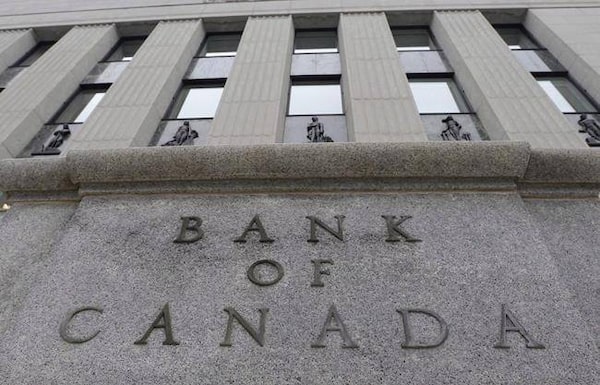
The Bank of Canada
Canadian government bond are outperforming their U.S. counterparts by the most in seven months, an advantage that's unlikely to disappear soon with the northern central bank in less of a rush to raise interest rates.
"There's way too much optimism priced into the Canadian curve," said Darcy Briggs, a Calgary-based portfolio manager at Franklin Bissett Investment Management with $5.4-billion in fixed income. "I don't expect Canadian rates to move as high or as fast as in the U.S."
Traders have boosted wagers that the U.S. Federal Reserve will increase interest rates steadily this year amid evidence U.S. inflation is creeping higher and concerns over the federal government's fiscal deficits. In Canada, expectations for monetary tightening have held steady amid signals of slower growth, including January's job slump, the biggest decline in payrolls since 2009.
Canadian five-year bonds were yielding 2.12 per cent at 9:52 a.m. in Toronto, 54 basis points less than similar maturity U.S. notes. That gap could widen to more than 80 basis points, according to Briggs.
Mark Chandler, Toronto-based head of fixed-income research at RBC Capital Markets, expects the spread to stay steady in the next few quarters before widening at the end of the year and reaching as much as 85 basis points by the end of 2019.
"The U.S. is somewhat ahead of Canada on a cyclical basis," and so, at some point, Fed expectations should further surpass those for the Bank of Canada, he said.
Hike Odds
James Dutkiewicz, Toronto-based chief investment officer at Sentry Investments Inc., is skeptical the gap can get much beyond 50 basis points, which has been about the limit for most of the past 25 years.
"We are likely close to the extreme," said Mr. Dutkiewicz, whose team manages about $14-billion. "Seventy-five basis points would be my guess for how far it can go this time."
Fed funds futures indicate a March hike by the U.S. central bank is almost certain and the prospect of three full hikes for 2018 is increasingly being priced in. That would match the median projection among policy makers, yet there's a growing number of economists who expect that they could tighten as many as four times in 2018.
In Canada, swaps traders expect the central bank to increase rates two or three times more this year after tightening policy in January for the third time in six months. But the Bank of Canada may prefer to see the Canadian dollar weaker than near $1.25 per greenback to protect the country's competitiveness, according to Franklin Bissett's Briggs.
"There's a lot of headwinds and a lot of uncertainty," he said. "The market is saying: Well, you gotta hike rates. But the Bank of Canada is more likely to take its time, if it needs to hike rates at all."